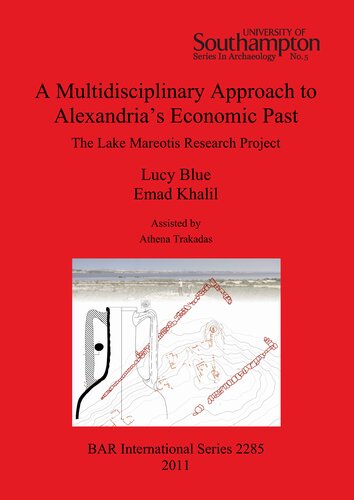

Most ebook files are in PDF format, so you can easily read them using various software such as Foxit Reader or directly on the Google Chrome browser.
Some ebook files are released by publishers in other formats such as .awz, .mobi, .epub, .fb2, etc. You may need to install specific software to read these formats on mobile/PC, such as Calibre.
Please read the tutorial at this link: https://ebookbell.com/faq
We offer FREE conversion to the popular formats you request; however, this may take some time. Therefore, right after payment, please email us, and we will try to provide the service as quickly as possible.
For some exceptional file formats or broken links (if any), please refrain from opening any disputes. Instead, email us first, and we will try to assist within a maximum of 6 hours.
EbookBell Team

4.4
102 reviewsBetween 2004 and 2008 the Centre for Maritime Archaeology (CMA), University of Southampton and the Department of Underwater Antiquities of the Egyptian Supreme Council for Antiquities (SCA), in conjunction with the Centre for Maritime Archaeology and Underwater Cultural Heritage (CMAUCH), University of Alexandria, conducted five seasons of survey along the shores of the western arm of Lake Mareotis, Alexandria, Egypt. This was to be the first systematic, comprehensive survey of the region, the aim being to more fully appreciate the nature of Lake Mareotis and the role it played in the economy of ancient Alexandria. An initial visit to the region in 2002 alerted the co-directors of the subsequent project, Lucy Blue (CMA) and Sameh Ramses (SCA), to the huge potential of the area, as well as the immediate threats that the archaeology of the region faced. In collaboration with Emad Khalil (CMAUCH), it was decided that funding to support a project should be sought. During a pilot season in 2004 over 60 sites were identified along the shores of the western arm of the lake, the majority of which were new discoveries. This volume is divided into seven chapters. The first three chapters outline the context of the research and the methodology adopted by the LMRP. Chapter 4 comments on the results of the ceramic survey and presents an appendix to this chapter. The ceramic assemblage is critical for understanding both the chronological scope of the material recovered that broadly equates to the mid 4th century BC to the 7th century AD, and the nature of activities at the sites. Chapter 5 sets the physical context and is the partial product of doctoral research undertaken. The geomorphological survey has provided invaluable new insight into the environmental context in which the archaeological sites should be viewed. Chapter 6 is essentially the 'meat' of the volume. Extending to 177 pages in length, it outlines a catalogue of all the 73 sites recorded as part of the LMRP. Chapter 7 presents some concluding remarks and an attempt is made to reflect on and make sense of the mass of information collated.